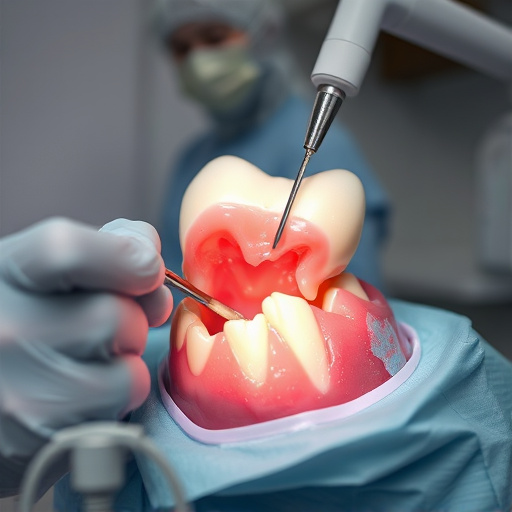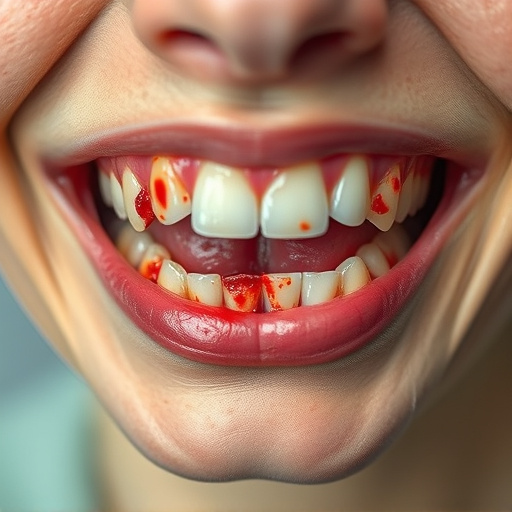Conservative dental treatment prioritizes minimal intervention to preserve natural teeth, focusing on prevention and long-term oral health. Techniques include filling cavities, using resin fillings/inlays, and applying sealants. Compared to extensive procedures like crowns or clear aligners, these methods are quicker, less painful, and more affordable. Early intervention through conservative treatments for children and adolescents prevents issues like misalignments and minor decay, fostering better hygiene habits and overall health. Regular brushing, flossing, dental check-ups, cleanings, and wisdom tooth removal further support optimal oral health.
Discover how early intervention can simplify your dental care journey with conservative treatment methods. This approach, focused on minimal impact solutions, is transforming oral health management. Learn about the fundamentals of conservative dentistry and its role in addressing dental issues proactively. We’ll explore key indicators for early intervention and outline straightforward steps to achieve and maintain optimal dental health using these conservative techniques.
- Understanding Conservative Dental Treatment Basics
- Early Intervention: When and Why It Matters
- Simple Steps for Effective Dental Care
Understanding Conservative Dental Treatment Basics

Conservative dental treatment focuses on minimizing invasive procedures while maximizing preservation of natural tooth structure. This approach prioritizes preventing further damage and promoting long-term oral health over drastic measures. It involves techniques like filling cavities instead of removing entire parts of the tooth, using resin fillings or inlays to restore damaged areas, and applying sealants for preventive care. These methods not only save on costs but also preserve the patient’s natural smile.
Compared to more extensive procedures such as dental crowns or clear aligners, conservative treatments are often quicker, less painful, and less expensive. For instance, while cosmetic dentistry can enhance aesthetics, conservative options concentrate on functionality and durability. Clear aligners, though popular for their discreetness, may not be suitable for every case, whereas fillings and sealants offer effective solutions for various dental issues without compromising the tooth’s structural integrity.
Early Intervention: When and Why It Matters

Early Intervention: Unlocking a Healthy Smile’s Potential
In the realm of dentistry, early intervention is akin to a game-changer—a conservative dental treatment approach that addresses oral health concerns at their inception. This proactive strategy recognizes that preventing dental issues is not just beneficial but often less invasive and more affordable than treating complex problems later on. By focusing on children and adolescents, dentists can identify potential issues such as misalignments or minor decay early, often before they cause significant discomfort or damage.
The benefits of early intervention are multifaceted. Simple procedures like dental bonding or teeth cleaning under a child’s comfort level can help maintain oral hygiene, prevent further complications, and promote better overall health. For instance, clear aligners, a popular conservative treatment option, offer a discreet way to correct bite issues without the need for metal braces. This not only enhances a young person’s confidence but also fosters good oral habits that will serve them throughout their lives.
Simple Steps for Effective Dental Care

Early intervention is key to maintaining optimal oral health, and conservative dental treatment offers a gentle approach to achieving it. This method focuses on preventing issues rather than merely treating them. A simple yet effective strategy involves regular brushing and flossing—the cornerstone of comprehensive dental care. By removing plaque and debris twice daily, you can prevent tooth decay and gum disease at an early stage.
Additionally, scheduling routine dental check-ups and professional cleanings is vital for preventive dentistry. Dentists can detect potential problems during these visits, such as signs of erosion or early periodontal issues. Simple procedures like wisdom tooth removal, if necessary, can also be performed conservatively to avoid future complications. Early detection and these basic practices form a robust foundation for maintaining healthy teeth and gums throughout one’s life.
Conservative dental treatment is a game-changer when it comes to maintaining oral health. By understanding its basics, recognizing the importance of early intervention, and following simple care steps, individuals can effectively manage their dental well-being. These strategies empower folks to navigate their dental care journey with ease, ensuring a bright and healthy smile for years to come.














